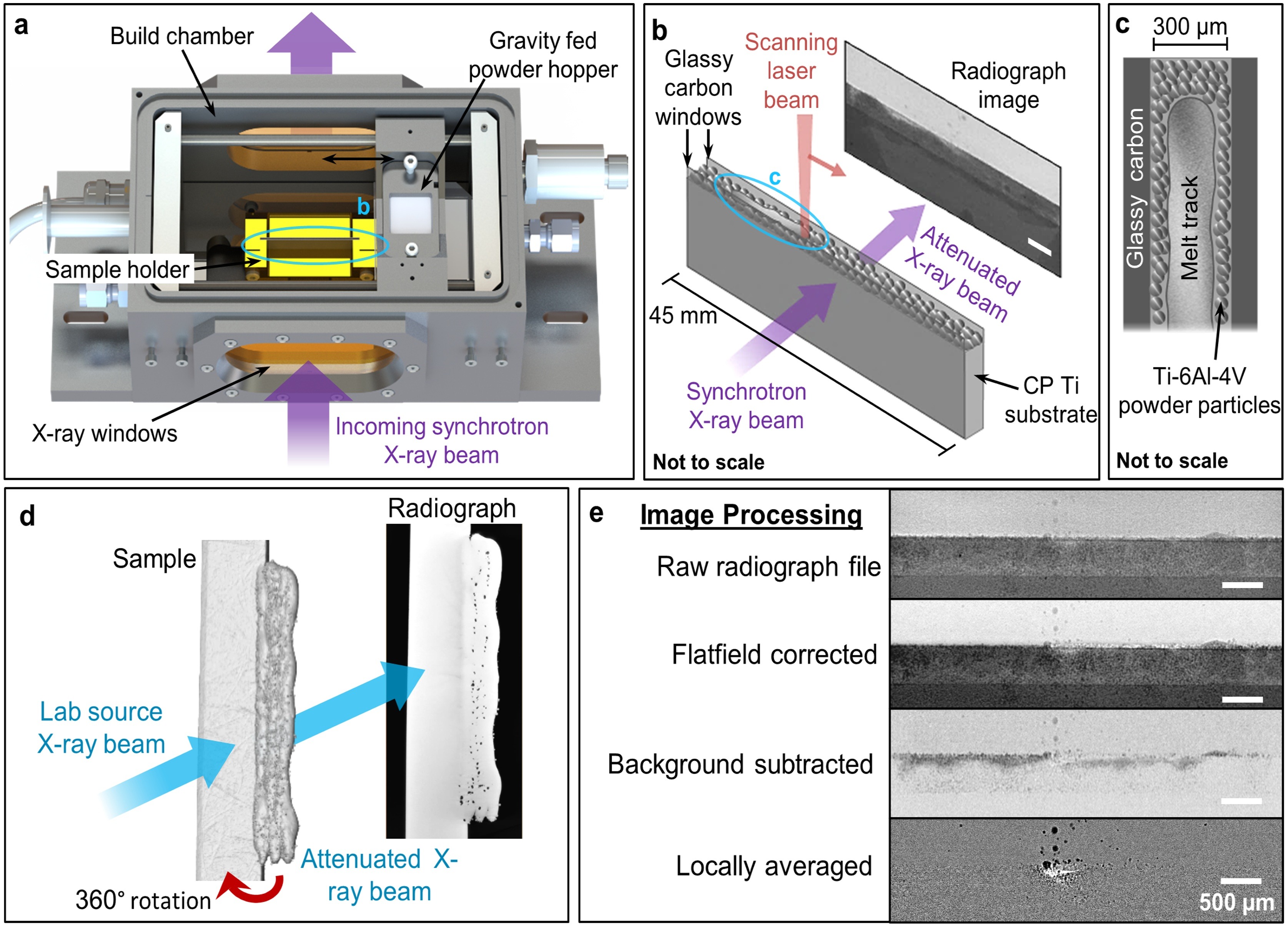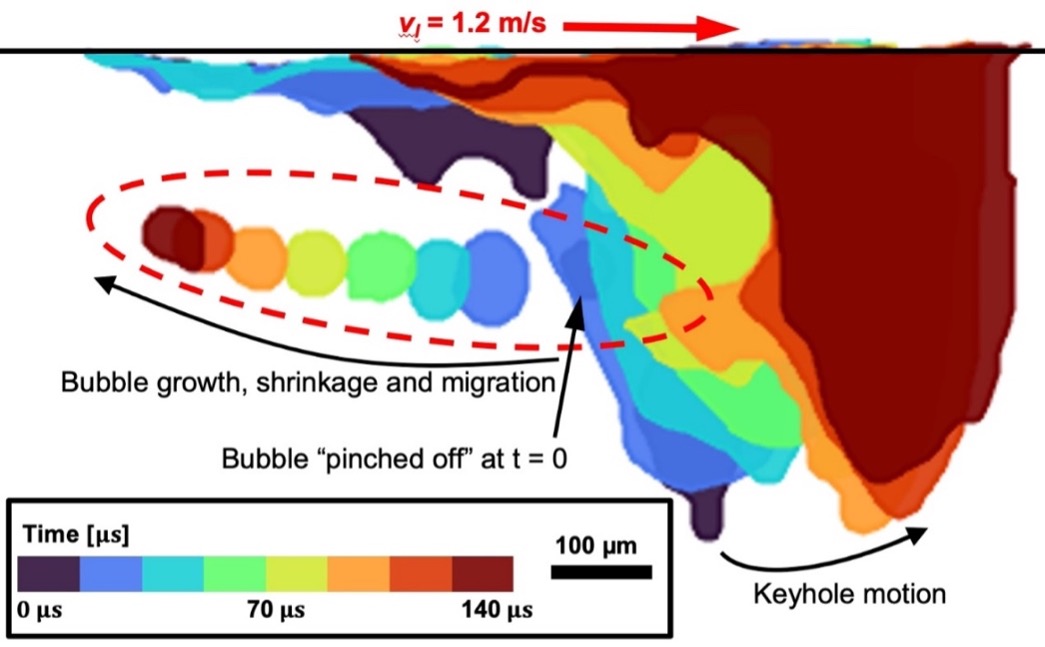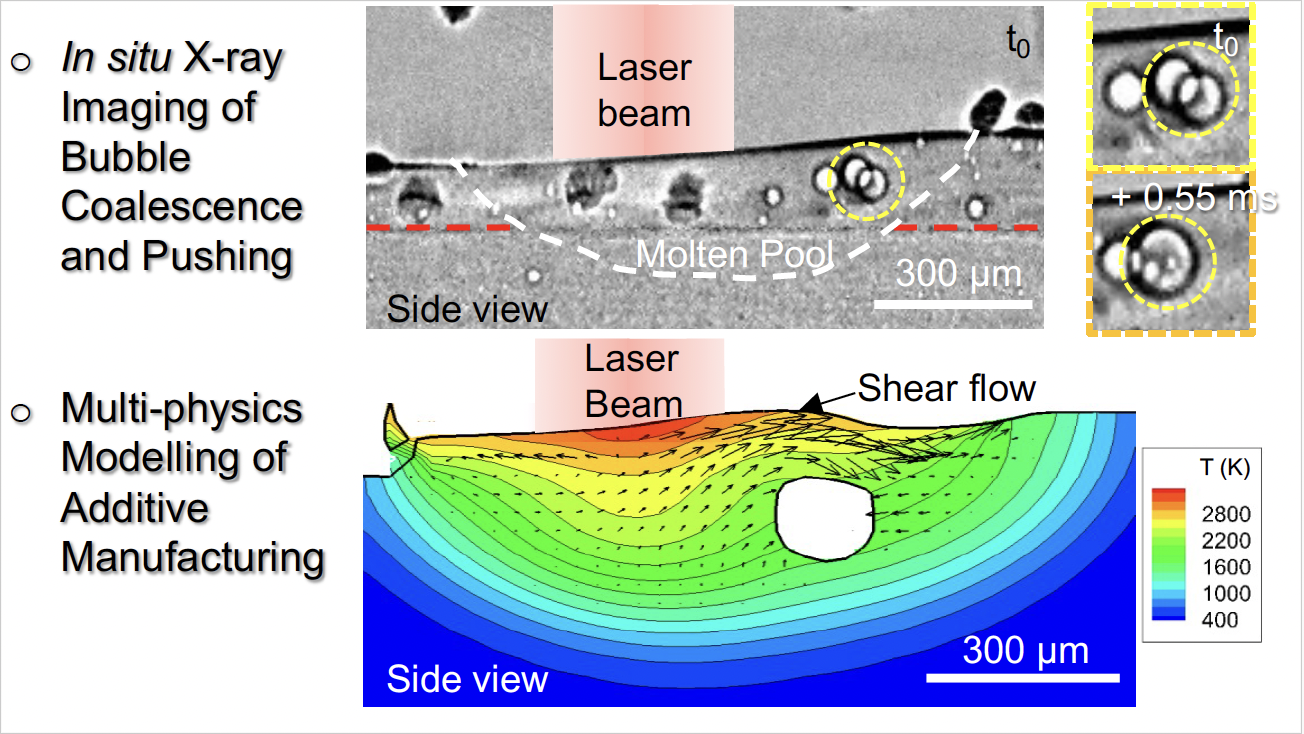All Publications /
Publications:
Shedding new light on laser powder bed fusion at ESRF – the European Synchrotron
26 / 08 / 20
A laser powder bed fusion (LPBF) additive manufacturing (AM) machine (or metal 3D printer) was custom designed and built by the MAPP team to perform full AM builds on a synchrotron beamline, shedding new light on the process using ultra-fast X-ray imaging at ESRF – the European Synchrotron.
LPBF spreads layers of powder, which are melted by a focussed laser beam according to a computer-generated programme. The process repeats until a full 3D part is produced.
The new paper, In-situ radiographic and ex-situ tomographic analysis of pore interactions during multilayer builds in laser powder bed fusion, published in Additive Manufacturing, is freely available via this link, before October 12, 2020.
In it, the influence of processing parameters on Ti-6Al-4V additive manufactured thin-wall components are investigated for multilayer builds, using a custom-built process replicator and in-situ high-speed synchrotron X-ray imaging. The In-Situ and Operando powder bed Process Replicator (ISOPR) was developed to build multilayer tracks in-situ during LPBF.
More widespread use of LPBF is being hindered by a lack of understanding of the complex laser-matter interactions involved.
Most in-situ synchrotron studies of the melt pool and pore formation have involved the melting of a single layer of material but LPBF components are formed by many layers.
This paper aids the understanding of the multilayer process by characterising “multilayer builds in-situ using high-speed synchrotron X-ray radiography, capturing the rapid dynamics of laser remelting, layer cohesion (or lack thereof), and changes in pore formation.”
Ex-situ examinations are also detailed in the paper.

Image caption: “(a) Experimental build chamber with key components labelled. (b) Simplified schematic of the sample holder during in-situ melting. (c) Schematic of the substrate and powder particles and melt track. (d) Schematic of μCT sample scans. (e) Image processing methods.” Reprinted from Additive Manufacturing, 36, Sinclair, L., Leung, C.L.A., Marussi, S., Clark, S.J., Chen, Y., Olbinado, M.P., Rack, A., Gardy, J., Baxter, G.J., Lee, P.D., In-situ radiographic and ex-situ tomographic analysis of pore interactions during multilayer builds in laser powder bed fusion, 101512., Copyright (2020), with permission from Elsevier."
More:
Publications
-

-
X1 Case Study B (UCL)
Impact of powder oxidation during additive manufacturing
Investigators: Prof Peter Lee
Researchers: Prof Chu...

